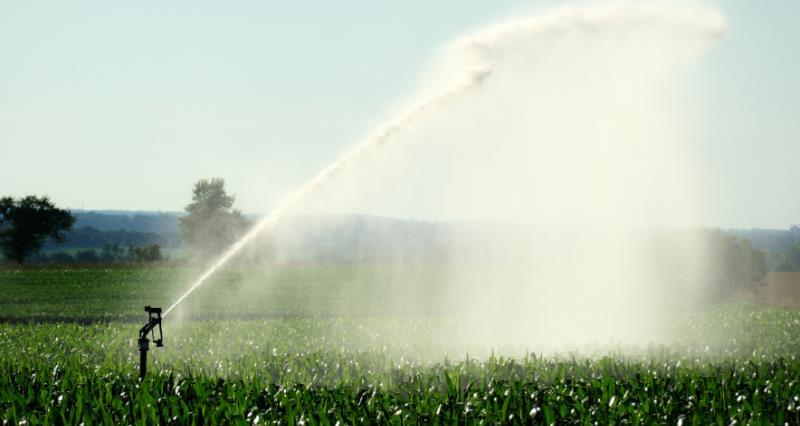In some years, the ability to abstract water from rivers and other watercourses is vital to ensure the success of key crops such as potatoes. And Yorkshire is the third largest potato growing area in England.
As a result, plans to change the way water and abstraction licences are managed will be hugely important for the food and farming sector. The plans, involving managing water at catchment level and administering licences at farm level, have been the subject of a recent consultation. Legislation could be introduced during the life of the next Parliament,with the introduction of new abstraction licences from 2020.
The NFU's response to Defra's proposals for these reforms can be found here.
Environment Agency Water Situation Reports
The Environment Agency produces monthly water situation reports for each region reviewing local rainfall, soil moisture deficit, river flows, groundwater levels and reservoir levels. They also publish a prospect for spray irrigation report that looks at the future water resources available for spray irrigation.
The latest reports can be found below:
Yorkshire and North East Water Situation Reports
Yorkshire and North East Water Situation Report - September 2020
Yorkshire and North East Water Situation Report - August 2020
Yorkshire and North East Water Situation Report - July 2020
Yorkshire and North East Water Situation Report - June 2020
Yorkshire and North East Water Situation Report - May 2020
Yorkshire and North East Water Situation Report - April 2020
North East Area Monthly Water Situation Reports
North East Area Monthly Situation Report - May 2020
Yorkshire Water monthly rainfall, reservoir level and water usage data
Yorkshire Water produces a monthly Watsit (water situation) Report to oversee their water resources. It includes a summary of all the major sources of the water they draw upon to make sure the taps stay full of water 24 hours a day. Data such as daily rainfall, regional reservoir stocks, river levels and demand is monitored and you can see our current position against historical and seasonal trends and fluctuations. The majority of the figures are produced either as a % of total capacity (in the case of reservoir stocks) or as Ml/d which is mega litres per day. 1 mega litre is equivalent to 1 million litres.
Prospects for Spray Irrigation
The Environment Agency manages water resources to protect the environment and ensure secure supplies for agriculture, industry and the public. In doing this, the Agency recognises the importance of irrigation to both national and local economies. In most years water resources are adequate, but in drought conditions the Agency has to work with farmers and growers where water is in short supply in order to make every drop count. The Prospects for Spray Irrigation reports (see related documents below) review the water resources availability for spray irrigation to allow for forward planning.
Prospect for spray irrigation - 2020
Prospect for spray irrigation- February 2019
Prospects for spray irrigation - February 2018
Prospects for spray irrigation - Spring 2017
